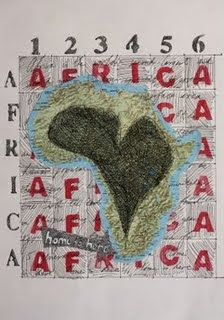













 But despite their reputation as being the great conquerors of the Asian continent, so tyrannical that the Chinese built a wall for protection, the Mongols are really incredibly generous and hospitable people. The Mongolian steppes quickly give way to desert. This is a harsh land of extreme heat and cold and in both Ulaan Baatar and the rural farm where our group stayed for 3 days we were greeted with love and kindness.
But despite their reputation as being the great conquerors of the Asian continent, so tyrannical that the Chinese built a wall for protection, the Mongols are really incredibly generous and hospitable people. The Mongolian steppes quickly give way to desert. This is a harsh land of extreme heat and cold and in both Ulaan Baatar and the rural farm where our group stayed for 3 days we were greeted with love and kindness.


















Lots of reading going on at the moment. Reading protocols, reading handbooks, reading more protocols. Feel like I have an never-ending jumble of inclusion and exclusion criteria in my head. Today I'm reading the Botswana HIV/AIDS Handbook. It's a fairly mundane read articulating treatment regimes, definitions for when to start and stop treatment etc etc. But one thing caught my eye, and perhaps gives a small insight into the uphill battle that is being faced in trying to reduce the burden of HIV in this country.
Sexual myths and misconceptions often interfere with safe sex messages, and
must be addressed candidly with patients. Such myths include the following:
o A woman with a wet or well-lubricated vagina is promiscuous, and
application of agents to decrease such wetness—which results in “dry
sex”—is necessary to prevent the impression of promiscuity.
o Self-masturbation is unnatural, or a cause of loss of fertility or energy.
o Sex with a virgin or infant will cure HIV infection.
o Condoms have worms or spread HIV.
o Condoms have large pores which permit HIV transmission.
o Showering after unprotected intercourse will prevent HIV infection.
Have a good weekend!

